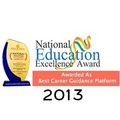You’ve got the skills. You’ve got the knowledge. But what you may not have is the piece of paper that proves it. Recognition of Prior Learning (RPL) is your pathway to turning those hard-earned experiences into a certified qualification. This guide will walk you through how to leverage your existing skills and knowledge to earn an RPL certificate, making the most of what you already know.
What is RPL?
Recognition of Prior Learning (RPL) is a process that acknowledges the skills and knowledge you’ve gained through work, life experiences, and informal training. Instead of starting from scratch, RPL allows you to get credit for what you already know. It’s a way to convert your experience into a formal qualification, saving you time and money.
Assessing Your Skills and Experience
Start by taking stock of your skills and experiences. What have you learned from your jobs, volunteer work, hobbies, or even personal projects? Make a list. Consider everything—technical skills, soft skills, and specific knowledge areas. If you’ve managed teams, completed projects, or learned on the job, these all count. Think broadly and inclusively about what you bring to the table.
The RPL Certification Process
The journey to an RPL certificate begins with an application. Here’s what you need to do:
- Gather Evidence: Collect proof of your skills and experience. This could be work samples, references, performance reviews, or even photographs of your work. The more comprehensive your evidence, the stronger your application.
- Match to Criteria: Align your evidence with the criteria for the qualification you seek. Look at the specific skills and knowledge requirements and map your experience to these.
- Submit Your Application: Fill out the necessary forms and submit your evidence. Some institutions might have specific templates or formats, so be sure to follow their guidelines closely.
- Wait for Review: Once submitted, your application will be reviewed by assessors who will determine if your experience meets the required standards.
Preparing Your RPL Portfolio
Your RPL portfolio is a comprehensive collection of evidence demonstrating your skills and knowledge. Here’s how to prepare it:
- Include Relevant Evidence: Only include evidence that is directly relevant to the qualification criteria. Quality trumps quantity here.
- Organize Clearly: Present your evidence in a clear, logical order. Use headings and sections to make it easy to follow.
- Provide Context: For each piece of evidence, provide a brief explanation of what it is and how it demonstrates your skills. Context helps assessors understand the relevance and significance of your experience.
- Reflect on Your Learning: Write reflections on what you learned from each experience. This not only shows what you did but also what you gained from it.
Submitting Your Application
Once your portfolio is ready, it’s time to submit. Ensure all required documents are included and double-check the submission guidelines. Common mistakes include missing information, poorly organized evidence, or failing to align with criteria. After submission, the review process begins. This can take some time, so be patient. You might be asked for additional information or clarification, so stay ready to respond promptly.
After Receiving Your RPL Certificate
Using Your RPL Certificate: Once you receive your RPL certificate, it’s time to put it to use. Update your resume, LinkedIn profile, and any other professional profiles to reflect your new qualification. This certification can open doors to new job opportunities, promotions, or even further education. Employers value the validation of skills and knowledge that an RPL certificate provides, making you a more competitive candidate in the job market. Get your RPL certificate from Skills Certified to ensure it holds industry recognition and credibility.
Considering Further Certifications: With your RPL certificate in hand, think about additional certifications or qualifications that could further enhance your career prospects. Continuous learning is crucial in today’s rapidly evolving job market. You might want to pursue advanced certifications, specialized training, or even higher education degrees to build on your RPL certification. This not only broadens your skill set but also keeps you updated with industry trends and demands.
Continuing Professional Development: Stay engaged with your industry. Attend workshops, join professional organizations, and keep your skills up-to-date. Professional development is an ongoing process, and RPL is just one step in your lifelong learning journey. By actively participating in industry events and continuous learning opportunities, you ensure that your skills remain relevant and you stay competitive in your field.
Conclusion
Recognition of Prior Learning is a powerful tool that allows you to turn your existing skills and knowledge into a formal qualification. By assessing your skills, preparing a comprehensive portfolio, and submitting a well-organized application, you can leverage your experience to advance your career. With an RPL certificate, you gain recognition for your expertise, opening new professional opportunities and paving the way for continuous growth and learning.






